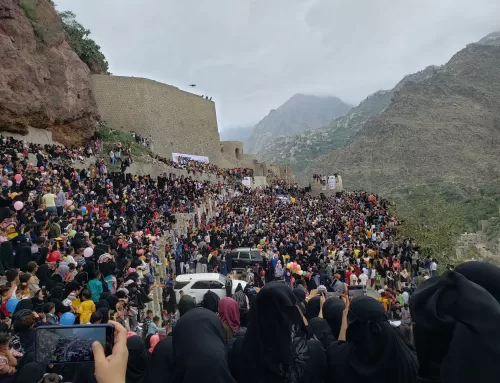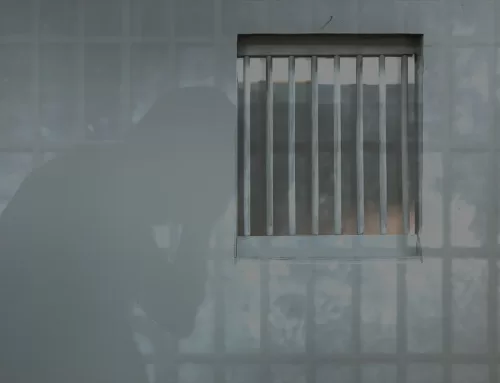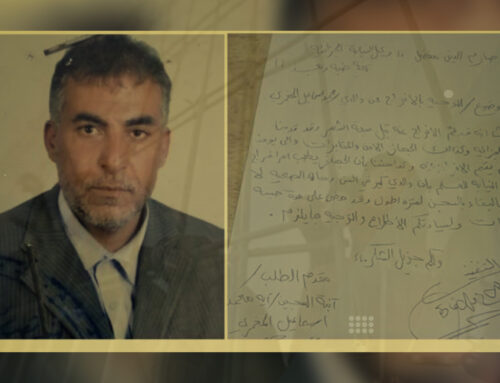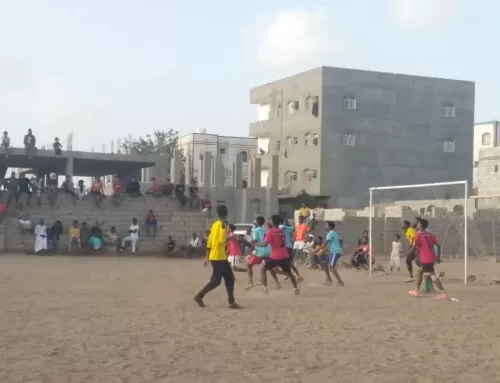January 18,2021
On March 15, 2020, Khaled stood in front of the ruins of his bombed school, recalling the tape of his study memories. In every corner there is a story, and in every place there are details. While he was spreading his gaze on the place, his saw a square-shaped stone left on the floor on the north side of the school.
He took it and turned it over with his hands. It is a small part of what it has been before this devastation happened to (Darb Al Ashraf) Elementary Secondary School, in Majzar District, Ma’rib Governorate.
The stone was decorated, as if it had been plucked from somewhere inside. At the top of the ruined building, the flagpole is still standing, since the school was built by the Social Fund for Development in 2003 with the contribution of the community.
Khaled says, “The place has become different. The wreckage of the school blocked the roads between the outskirts of the village, because it was located at a crossroads.”
Khaled remembered his school mates and teachers, as they stood saluting the Republican flag every school morning before they set out for classes. He tried to express all this with verses of poetry. A question knocked on his head: “If his displaced school mates ever return to their homes, where would they go to continue their education?!”
Za’ed, (a pseudonym), one of the young graduates of (Darb Al Ashraf school), recalls sports competitions, as the school team used to participate in the District league, and go with the school admins in unison to As Sahari villages or to Al Humaydhah or Mellaha forts.
Za’ed also recalls Baraqish, a periodical newspaper that is published every three months and speaks for the activities it documents and promotes. Students race to write columns and different topics, and spread their various creativity through it.
Za’ed has not lost sight of the ceremony, at the beginning of the second semester, for honoring top and outstanding students and ideal teachers, while the parents were encouraging their children to compete to be honored at the next ceremony. He also remembers the prominent role of the Parents Council to correct the course of education and to overcome the difficulties and obstacles that appear from time to time during school days.
Seventeen years have passed since the construction of the school, from which hundred students graduated and went to universities. It always won first places in the cultural and scientific competitions organized among the schools of Majzar District.
In 2019 and 2020, the strength of male and female students in the school reached nearly 400 students in all grades, as the largest proportion was for displaced students who came to the area fleeing from other war-torn areas.
At the end of January 2020, with the resumption of the second semester, Ansar Allah group (the Houthis) took control of Majzar District and Darb Al Ashraf village, in which the school is located. Residents of the village were displaced to the city of Ma’rib, including the family of the student Khaled, who studies in the first grade of secondary school.
On March 8, 2020, at 7:00 a.m., the Saudi/UAE-led coalition launched two air strikes on the school, which resulted in destroying the school completely, collapsing two adjacent houses, and causing damages in two others.
Through the testimonies documented by Mwatana for Human Rights, eyewitnesses did not disclose the presence of armed men of Ansar Allah group (Houthis) inside the school during the airstrike. However, Mwatana obtained a photo showing the burning of a number of the group’s military vehicles inside the school fence after the bombing.
Everyone was shocked, as the school they had been waiting for for more than two decades was destroyed in a blink of an eye and became a bile of stones. Hundreds of students lost hope to return to their classrooms, or even stand in front of the flagpole.
In late 2019, one month before Ansar Allah group (the Houthis) took control of the district in which the school is located, a charity association supported the school with fans and connected electricity to it, in addition to providing the school with a water tank with a pump, plastic tubes, blackboards and pens.
Darb Al Ashraf School, before it was bombed, consisted of nine classrooms, administration room, and three bathrooms on one floor. It was surrounded by a fence from the north and west. Next to it, there are classrooms for the secondary school, which is similar to an independent school, still exists. As for the nine classrooms, they were leveled by the aerial bombardment with the ground.
In Mwatana’s “Undermining the Future” report, Mwatana for Human Rights had documented no less than (153) air attacks carried out by the Saudi/UAE-led coalition fighters in (16) Yemeni governorates. The report also reveals that the parties to the conflict carried out at least 171 incidents of occupying schools and using them for military purposes, 131 of which were carried out by the Ansar Allah armed group (Houthis), 30 were committed by the popular resistance and forces affiliated with President Hadi, and 8 by the UAE-backed Southern Transitional Council forces.
As the International Day of Education, January 24, is coming soon, this is an occasion to remind the parties to the conflict in Yemen of their responsibilities towards the present and future generations, and that the systematic destruction of education and its consequences must stop now, not tomorrow.






